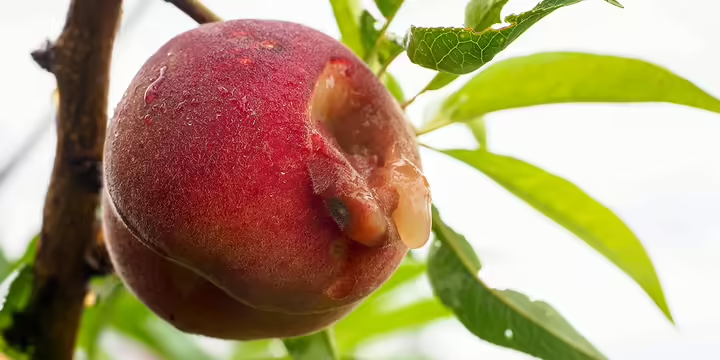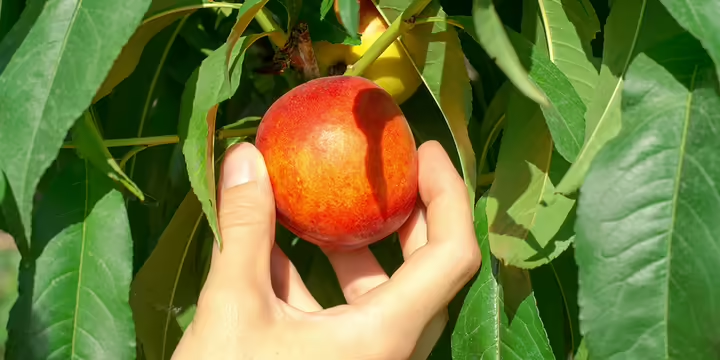Growing Nectarine Trees
No variety of nectarines is recommended for northern and central Illinois as they are not winter hardy. Most varieties are self-fruitful. Standard trees that are grafted on Lovell or seedling rootstocks are preferred. They can also be grown in favorable locations in central Illinois.
Nectarines need the central part of the canopy open. They need severe annual pruning as the fruit is borne on one year old wood. Caring for nectarines is similar to care for peaches as the fruit is borne on one year old wood. Disease management is similar to peach disease management. Some of the suggested varieties include 'Early Flame', 'Sunglo', 'Redchief', 'Cavalier' and 'Redgold'.
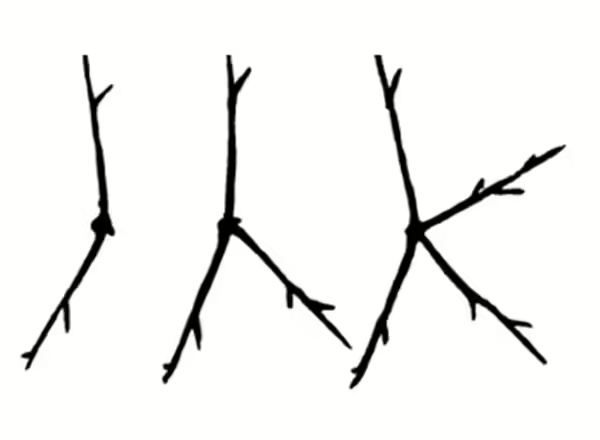
The open-center system is suggested for peaches and nectarines (Figure N-26.). This system consists of a short trunk about 21⁄2 to 31⁄2 feet tall with two, three, or four scaffolds arising from the trunk. The trunk is cut off at the level of the top scaffold. The bottom scaffold should arise from the trunk at least 15 inches above the ground, and the highest scaffold should arise no more than 30 inches from the ground. Vertical spacing of scaffolds along the trunk is not important. All scaffolds may arise at the same level or may be spaced apart. They should be spaced as evenly as possible around the trunk.
The center of the tree is kept open by removing any large branches growing into the center. This open center allows sunlight to penetrate the interior of the tree and favors fruit production in this area.
The pruning system for dwarf nectarine trees is the same as for standard trees.
Pruning at planting time. If unbranched trees are planted, head them back to 27 inches above the ground. If branched trees are planted, the permanent- scaffold system may be selected if desirable branches are present. Scaffold branches should arise from the trunk at least 15 inches, but no more than 30 inches, above the ground. They should be evenly spaced around the trunk. The branch structure of some trees is most easily adapted to two scaffold trees, some to three scaffold trees, and some to four scaffold trees.
Look over the branch structure on each tree and decide whether it should be trained as a two, three, or four scaffold tree.
- If scaffolds can be selected, remove all other branches flush with the trunk and cut out the top at the level of the highest scaffold. If the scaffolds are about equal in size, shorten them to 10 to 15 inches long. If they are unequal in size, cut each back to 3 to 5 inches long and leave two buds.
- If desirable branches for scaffolds are not present, top the tree at 27 to 30 inches and cut back the branches leaving them 3 to 5 inches long. Scaffolds will then be selected after 1 year’s growth.
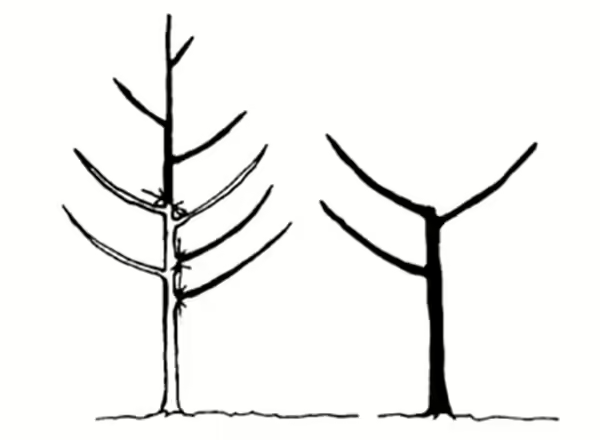
Pruning after 1 year.
Usually all of the scaffolds can be selected at this time if this was not done at planting (Figure N-27). Cut off all other branches at the branch collar. The trunk can be cut off at the level of the highest scaffold or a 2 to 3 inch stub can be left for 1 year and then cut off. Do not allow any branches to grow from the stub.
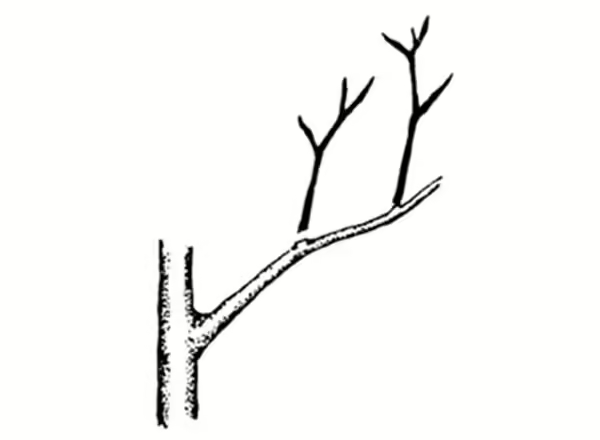
Cut out any lateral branches arising on the scaffolds (Figure N-28.) within 18 inches of the trunk. If branched trees were planted and scaffolds were selected at planting time, prune these trees as suggested for 2-, 3-, and 4-year old trees.
If the scaffolds are about equal in size, no cutting back is needed. If they are not about equal in size, cut back and thin out the larger ones to allow the less vigorous ones to catch up.
Pruning after 2, 3, and 4 years.
Complete scaffold selection if needed. Prune as little as possible. How- ever, the scaffolds must be kept nearly equal in size and the center must be kept open. Prune out branches arising on the scaffolds within 18 inches of the trunk. Branches arising from the trunk that are not selected as scaffolds should be pruned out. Peaches and nectarines should start bearing during their 3rd year in the orchard.
Pruning after 5 years.
After 5 years, nectarine trees should be in heavy production. These trees grow rapidly and branch profusely. Thus, moderate to heavy pruning each year is needed to produce healthy bearing wood and to prevent trees from becoming too dense, too tall, and too spreading. In general, the older the tree becomes, the heavier the pruning required to maintain production and vigor.
Scaffolds must be thinned out and shortened and the center must be kept open. If the limbs are allowed to grow too large or too long, they may break under a load of fruits. Also, follow the general pruning rules.
Revitalizing Old Trees
Neglected trees will be too dense, may be too tall, will have dead wood, and will be lacking in vigor. They need heavy pruning to invigorate them and produce new fruiting wood. They can tolerate heavy pruning. First, select scaffolds to keep, then remove the other ones. Remove all dead, diseased, and injured branches. Then shorten and thin out the selected scaffolds.
Sometimes the most practical method of revitalizing neglected trees is dehorning, cutting scaffolds back nearly to the main trunk.
Dehorning frequently will revitalize old peach and nectarine trees, though a year’s crop will be lost. This may be done all at one time, preferably during a no crop year when the fruit buds have been killed by winter cold, or one scaffold a year may be cut back. This staggered dehorning reduces but does not eliminate the crop.

